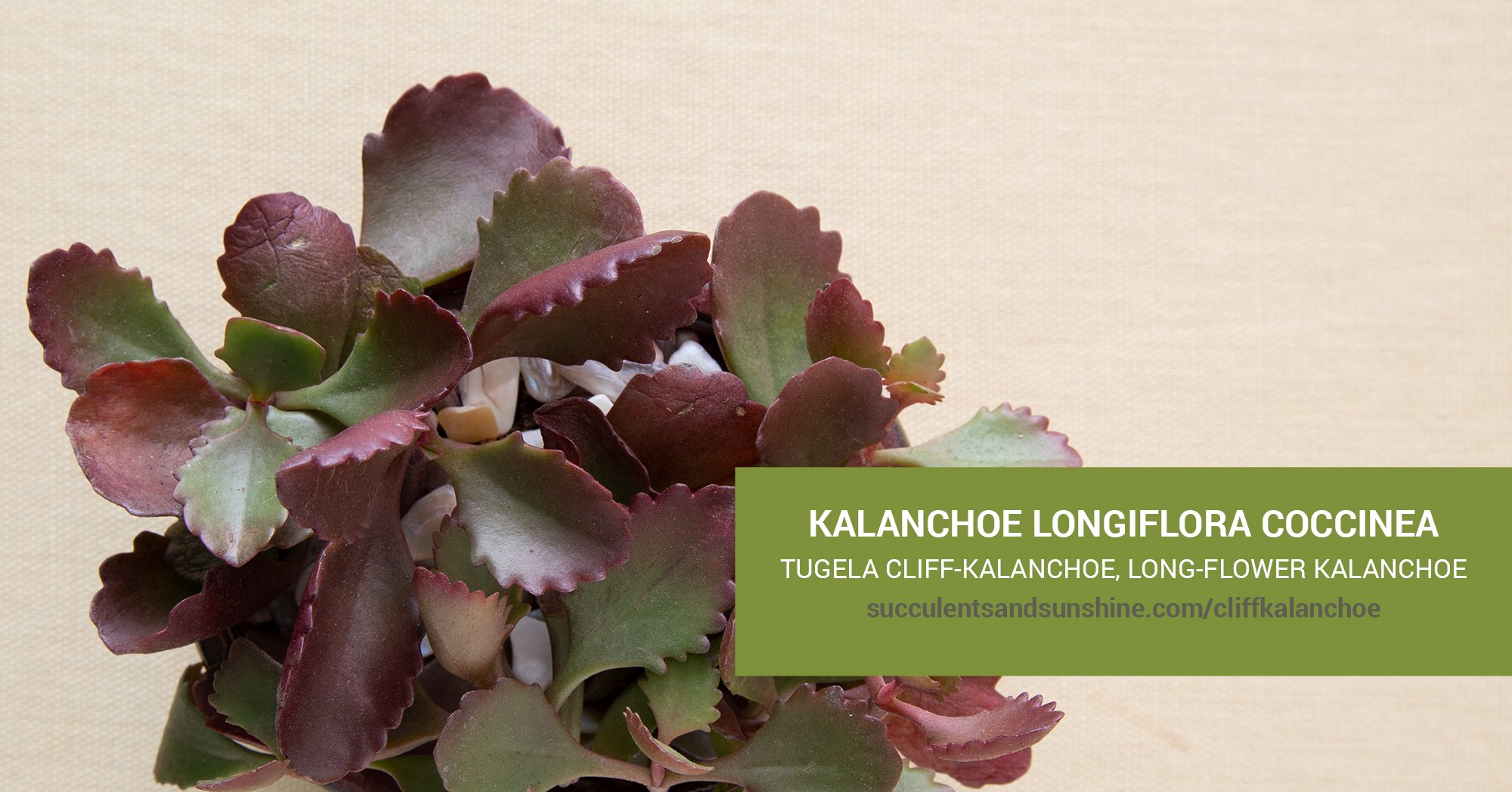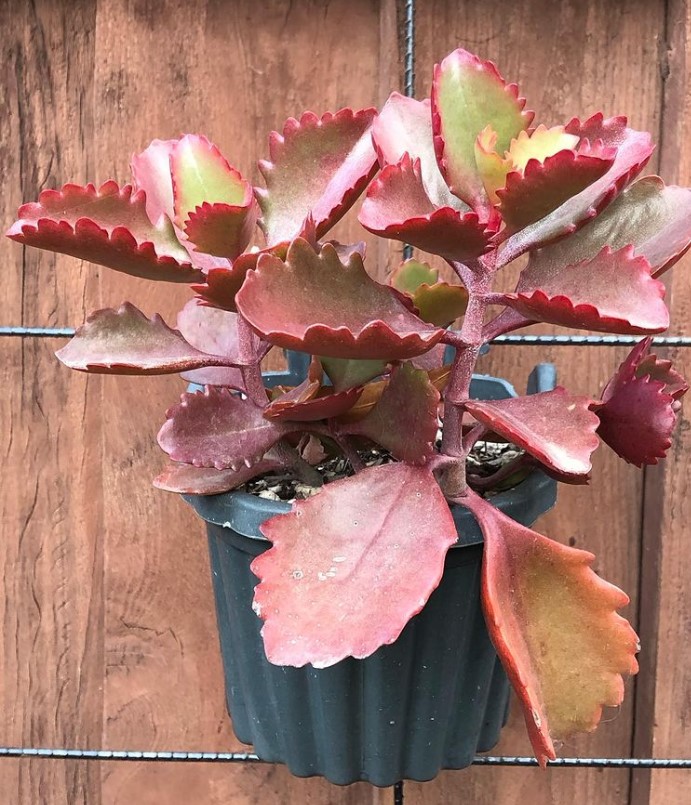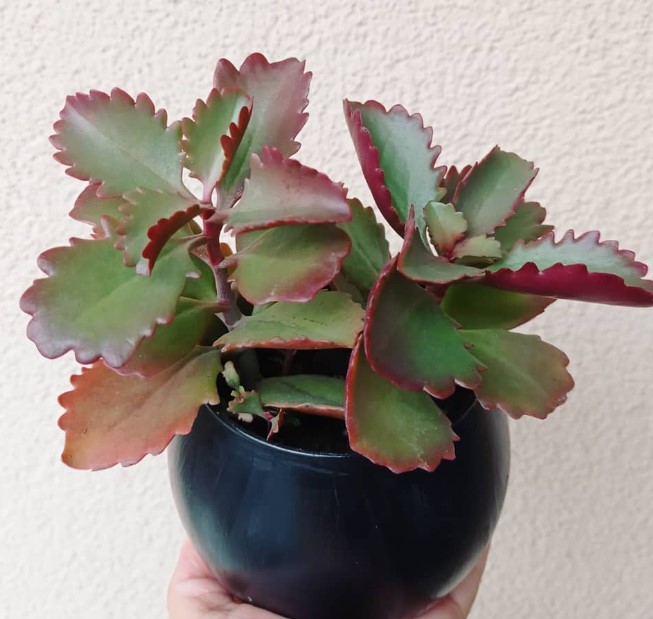This particular type of Kalanchoe has red and green scalloped leaves that grow on thin stems. It produces yellow flowers during late spring and early summer, and its name stems from the Tugela region in South Africa, where it is found growing along cliff faces.
Table of Contents
Care and Propagation Information
The Tugela Cliff-kalanchoe (Kalanchoe longiflora coccinea) is suitable for container gardens and rockeries, as it grows and spreads out. This shrub succulent can also be hung in containers to provide a “filler” effect.
Watering
“Tugela Cliff-kalanchoe” requires typical care for succulents, following the “soak and dry” approach. The soil should be allowed to become completely dry before rewatering.
Where to Plant
If temperatures in your area drop below 30° F (-6.7° C), it’s advisable to grow the Tugela Cliff-kalanchoe in a container that you can move indoors. For optimal growth, ensure that the plant receives plenty of sunlight, either full or partial.
If you’re growing indoors, position your plants in a room that receives a lot of sunlight, like next to a window that faces south (if you’re in the Northern Hemisphere).
How to Propagate Kalanchoe longiflora coccinea “Tugela Cliff-kalanchoe”
The Tugela Cliff-kalanchoe (Kalanchoe longiflora coccinea) can be grown from stem cuttings.
Cuttings
To propagate Kalanchoe longiflora coccinea, take a cutting with a clean, sharp knife or scissors. Allow the end of the cutting to dry out for a few days, then plant it in a pot with well-drained soil. Keep the soil moist but not saturated, watering only when the top layer of soil has dried out.
Often Mistaken For
Care and Propagation Information
General Care for Kalanchoe longiflora coccinea “Tugela Cliff-kalanchoe”
The Tugela Cliff-kalanchoe (Kalanchoe longiflora coccinea) is suitable for container gardens and rockeries, as it grows and spreads out. This shrub succulent can also be hung in containers to provide a “filler” effect.
Watering
“Tugela Cliff-kalanchoe” requires typical care for succulents, following the “soak and dry” approach. The soil should be allowed to become completely dry before rewatering.
Where to Plant
If temperatures in your area drop below 30° F (-6.7° C), it’s advisable to grow the Tugela Cliff-kalanchoe in a container that you can move indoors. For optimal growth, ensure that the plant receives plenty of sunlight, either full or partial.
If you’re growing indoors, position your plants in a room that receives a lot of sunlight, like next to a window that faces south (if you’re in the Northern Hemisphere).
How to Propagate Kalanchoe longiflora coccinea “Tugela Cliff-kalanchoe”
The Tugela Cliff-kalanchoe (Kalanchoe longiflora coccinea) can be grown from stem cuttings.
Cuttings
To propagate Kalanchoe longiflora coccinea, take a cutting with a clean, sharp knife or scissors. Allow the end of the cutting to dry out for a few days, then plant it in a pot with well-drained soil. Keep the soil moist but not saturated, watering only when the top layer of soil has dried out.
Often Mistaken For
, commonly referred to as the desert Surprise Plant, is a succulent species found in the deserts of Africa.
The Desert Surprise Plant, scientifically known as Kalanchoe sexangularis, is a succulent native to the deserts of Africa.
FAQ
How big do Kalanchoe Longiflora get?
The flowers are tubular, long, and red-pink in color.
What is the common name for Kalanchoe sexangularis?
The bushveld kalanchoe is a succulent plant native to South Africa.
How tall does kalanchoe longiflora grow?
It produces reddish-orange flowers that are arranged in clusters.
What is the common name for Kalanchoe Longiflora?
The Tugela Cliff is a sheer rock face with a vertical drop of approximately 700 meters, topped by the shrub-like succulent Kalanchoe.
What is the difference between kalanchoe longiflora and sexangularis?
It is possible to differentiate Kalanchoe longiflora from its similar relative, Kalanchoe sexangularis, by its four-angled stems, grey patelliform leaves, and a longer corolla tube. In comparison, K. sexangularis has cylindrical to irregularly ridged stems and a corolla tube that is only 7-10 mm in length.



